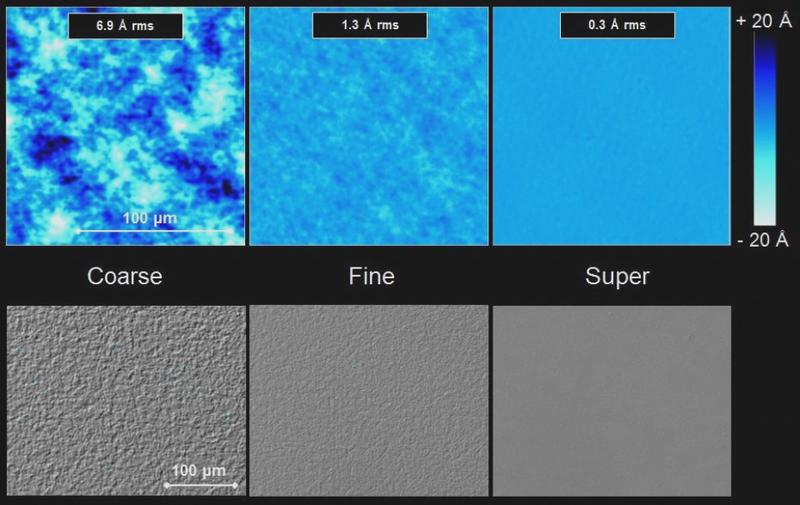

“Superpolishing” refers to processes that are designed to supply surfaces featuring an exceptionally low scattering of sunshine within the UV to IR wavelength ranges. These super-polished surfaces often demonstrate surface scattering levels less than 1ppm (wavelength dependent). In terms of surface roughness, this typically means surfaces with significantly but 1A RMS, integrated over spatial scales from approximately 1 micron to 100 microns. Super polished surfaces could also be flat or spherical with a radius of curvature as short as 20mm.

Super polished surfaces are generally characterized using optical profilometry techniques which are sensitive across the applicable spatial scale. Other techniques like atomic force microscopy and stylus profilometry can also be used but generally perform best outside of the spatial range generally concerning optical scatter. When coated with a highly reflective coating, the entire loss of a surface could also be measured with high sensitivity employing a cavity ring-down technique.
Each measuring device has its own measurable spatial frequency range. Therefore, the current detection methods are divided into three types: traditional interferometry, white light interferometry (WLI), and atomic force microscope (AFM).
Different spatial frequency ranges correspond to differing types of surface errors. These frequency groups don't have clearly defined boundaries but are generally understood to hide certain frequency ranges. a standard HeNe interferometer is clearly ideal for measuring lower spatial frequencies related to typical Zernike polynomials, referred to as figure error.
They slightly overlap the mid-spatial frequency range of the WLI, but the WLI remains better-suited to live this finer level of surface errors, referred to as waviness. during this range, errors begin to contribute to scattering and performance degradation. Both the WLI and AFM can measure roughness, but the critical spatial frequency group is application-dependent.
Visual and longer-wavelength applications are generally measured below 2,000 cycles/mm, during which case a WLI is often used. AFM is right for taking a better check out a surface and should be necessary for measuring the high spatial frequencies required for UV applications.
At present, the newest optical processing, the method of using super-polished optics, completely eliminates the sub-surface damage by shifting the main target from the mechanical polishing process to the reaction between the slurry, glass, and therefore the polishing disc. The mechanical action is merely wont to remove elements from the substrate when a reaction occurs within the Beilby layer. Although silica glass is insoluble in water, the Beilby layer may be a silica layer formed during the polishing process. it's modified by the diffusion of hydroxide ions. Once the hydroxide ions are formed, they will protect the substrate from further changes.
Name: Sales Department
Mobile:+8613019214973
Tel:86-431-81905988
Whatsapp:+8618043023344
Email:sales@china-optics.biz
Add:No.3 Shenzhen street, Economic and Technology Development Zone ,Changchun China
We chat
